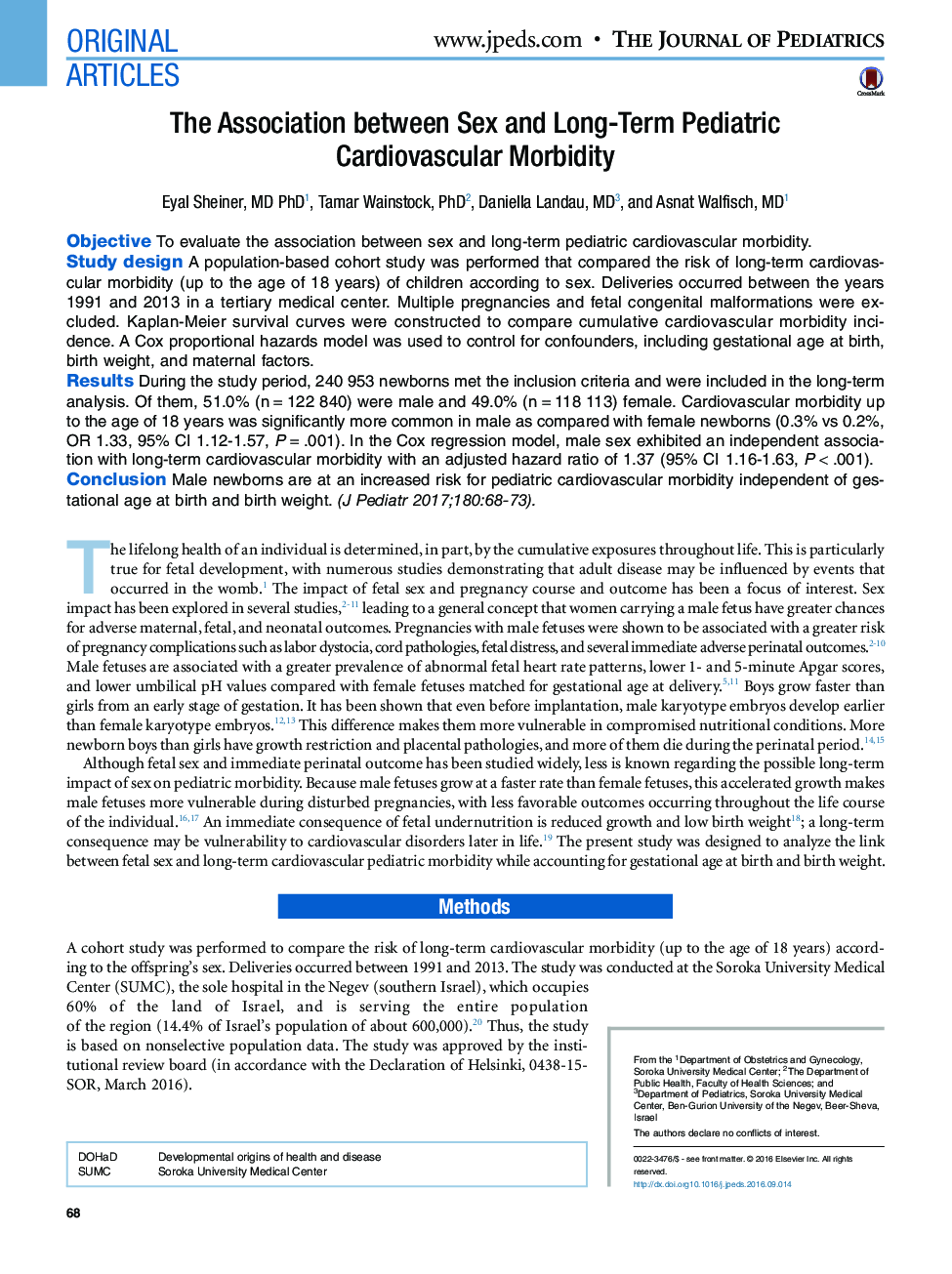| کد مقاله | کد نشریه | سال انتشار | مقاله انگلیسی | نسخه تمام متن |
|---|---|---|---|---|
| 5719284 | 1607420 | 2017 | 7 صفحه PDF | دانلود رایگان |
ObjectiveTo evaluate the association between sex and long-term pediatric cardiovascular morbidity.Study designA population-based cohort study was performed that compared the risk of long-term cardiovascular morbidity (up to the age of 18 years) of children according to sex. Deliveries occurred between the years 1991 and 2013 in a tertiary medical center. Multiple pregnancies and fetal congenital malformations were excluded. Kaplan-Meier survival curves were constructed to compare cumulative cardiovascular morbidity incidence. A Cox proportional hazards model was used to control for confounders, including gestational age at birth, birth weight, and maternal factors.ResultsDuring the study period, 240 953 newborns met the inclusion criteria and were included in the long-term analysis. Of them, 51.0% (nâ=â122 840) were male and 49.0% (nâ=â118 113) female. Cardiovascular morbidity up to the age of 18 years was significantly more common in male as compared with female newborns (0.3% vs 0.2%, OR 1.33, 95% CI 1.12-1.57, Pâ=â.001). In the Cox regression model, male sex exhibited an independent association with long-term cardiovascular morbidity with an adjusted hazard ratio of 1.37 (95% CI 1.16-1.63, Pâ<.001).ConclusionMale newborns are at an increased risk for pediatric cardiovascular morbidity independent of gestational age at birth and birth weight.
Journal: The Journal of Pediatrics - Volume 180, January 2017, Pages 68-73.e1
